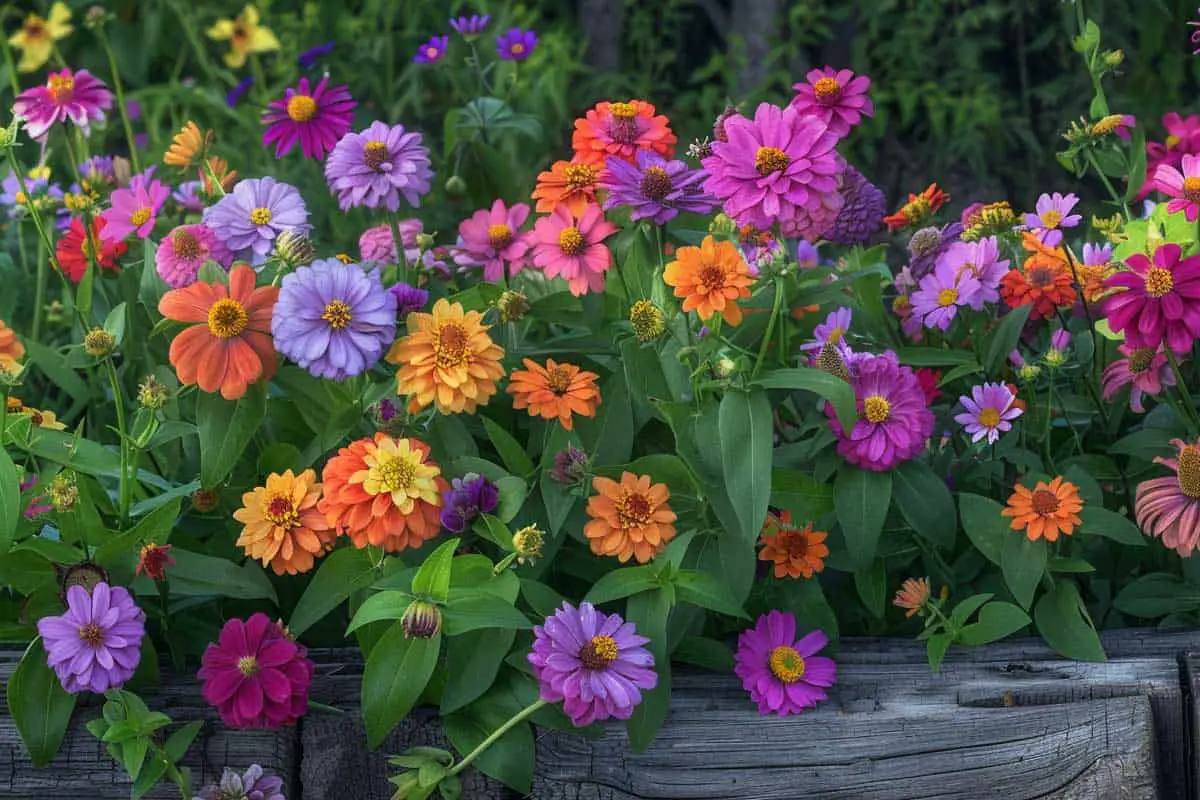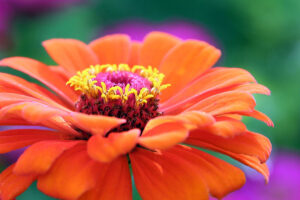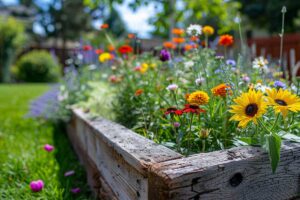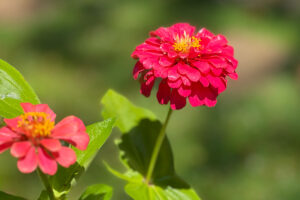This page may contain affiliate links. If you click and buy, we might get a small commission at no cost to you.
Looking to add vibrant color and layered petal beauty to your garden? If you love zinnias, you’ll adore these seven similar blooms that bring the same charm and appeal. These flowers share bright, eye-catching colors and an extended blooming period, making them perfect for creating a stunning garden display.
1. Dahlias
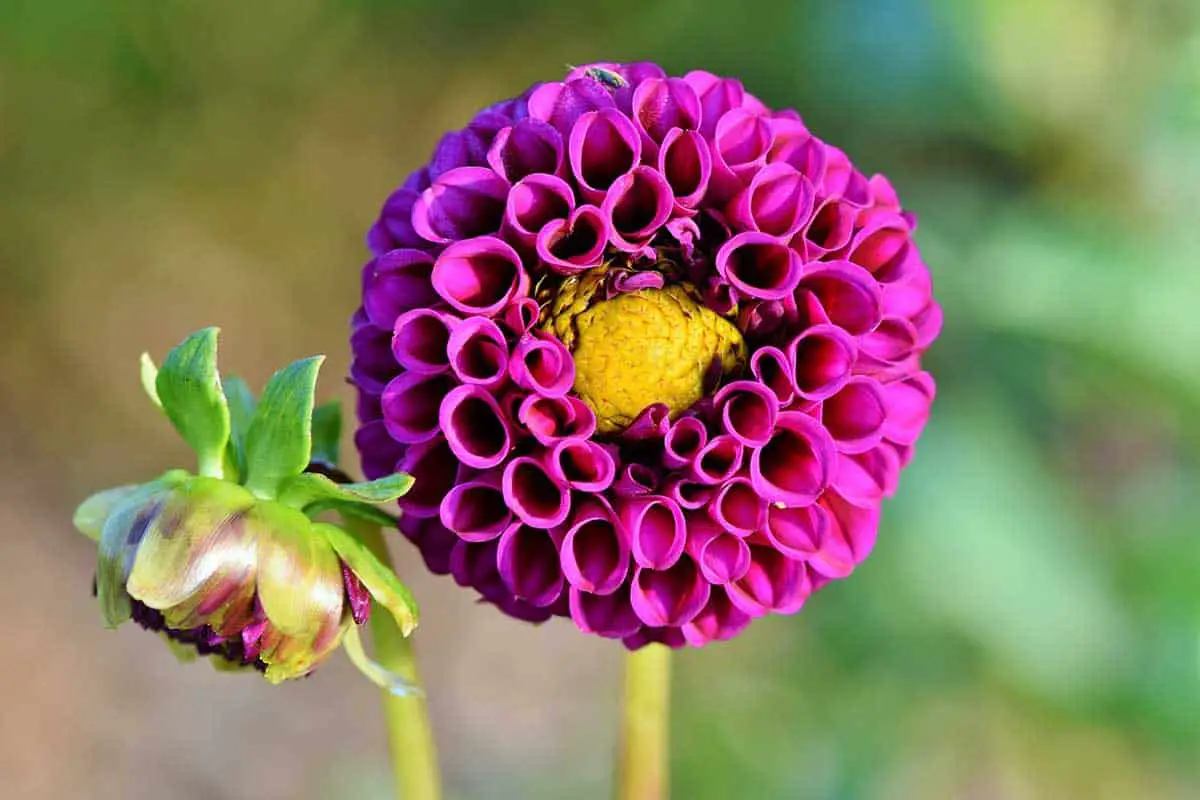
- Scientific name: Dahlia
- Height: 1 to 4 feet
- Sun Requirements: Full sun
- Bloom Period: Mid-summer to first frost
- Perennials in warm climates (USDA zones 8-11), but often grown as annuals in cooler climates.
Dahlias are renowned for their dazzling colors and intricate petal arrangements. They come in a wide array of hues, ranging from deep reds and purples to bright yellows and whites. These flowers are ideal for adding a burst of color to your garden and work wonderfully as cut flowers for vibrant bouquets.
Thriving in well-drained soil, dahlias require regular watering and some staking to support their tall, heavy blooms. Their varied sizes and shapes, from pompoms to cactus forms, make them a versatile choice for any garden design.
2. Cosmos

- Scientific name: Cosmos bipinnatus
- Height: 2 to 5 feet
- Sun Requirements: Full sun
- Bloom Period: Summer to fall
- Annuals
Cosmos flowers are light, airy, and just as colorful as zinnias. They feature daisy-like blooms with soft, feathery foliage that sway gracefully in the breeze. Available in shades of pink, white, and crimson, cosmos add a whimsical touch to garden beds and borders.
These easy-to-grow annuals require minimal care once established. They attract a variety of pollinators, including bees and butterflies, making them not only beautiful but beneficial for the garden ecosystem.
3. Purple Coneflower (Echinacea)
- Scientific name: Echinacea purpurea
- Height: 2 to 4 feet
- Sun Requirements: Full sun to partial shade
- Bloom Period: Summer to early fall
- Perennials
Purple coneflowers are known for their striking, daisy-like blooms with prominent central cones. Their vibrant purple petals and tall stems make them a standout in any garden. These hardy perennials are perfect for adding vertical interest and vibrant color.
Echinacea is also valued for its medicinal properties, often used in herbal remedies to boost the immune system. They are drought-tolerant once established and attract butterflies and bees, enhancing your garden’s biodiversity.
4. Gerbera Daisies
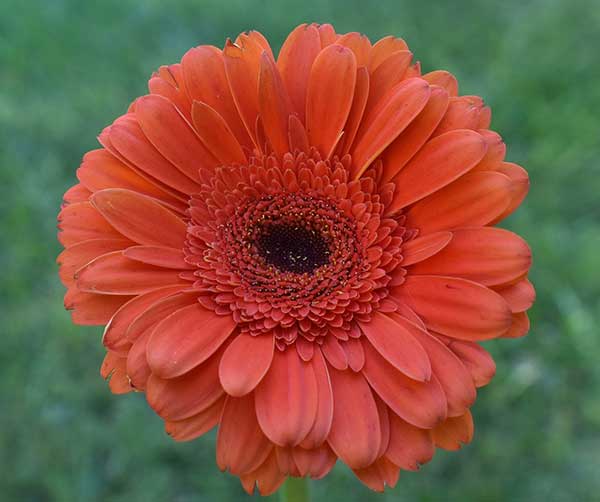
- Scientific name: Gerbera jamesonii
- Height: 1 to 2 feet
- Sun Requirements: Full sun to partial shade
- Bloom Period: Late spring to fall
- Perennials in warm climates (USDA zones 8-10), but often grown as annuals in cooler climates
Gerbera daisies are loved for their large, vividly colored blooms that can brighten any garden space. Their striking flowers come in various shades, including red, yellow, pink, and orange, adding a cheerful touch to borders and containers.
These flowers thrive in well-drained soil and require regular watering. Gerberas are also excellent cut flowers, maintaining their beauty in vases for extended periods. Their compact growth habit makes them suitable for small garden spaces and containers.
5. Marigolds

- Scientific name: Tagetes
- Height: 1 to 3 feet
- Sun Requirements: Full sun
- Bloom Period: Spring to fall
- Annuals
Marigolds are a gardener’s favorite due to their bright, cheerful blooms and easy cultivation. They come in various shades of yellow, orange, and red, and their dense, rounded flowers resemble those of zinnias.
These hardy annuals are great for edging, borders, and companion planting, as they are known to repel pests. Marigolds thrive in most soil types and require minimal maintenance, making them ideal for novice gardeners.
6. Chrysanthemums
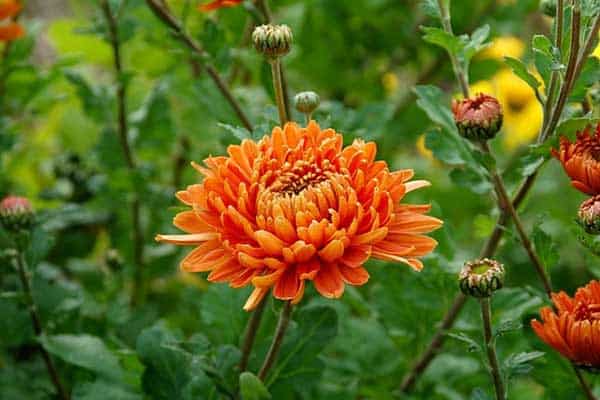
- Scientific name: Chrysanthemum morifolium
- Height: 1 to 3 feet
- Sun Requirements: Full sun
- Bloom Period: Late summer to fall
- Perennials
Chrysanthemums, or mums, are beloved for their stunning fall displays. Their blooms come in various forms, including daisy-like, pompom, and spider types, and in a wide range of colors from yellow and orange to red and purple.
These perennials are perfect for adding late-season color to the garden. Mums prefer well-drained soil and benefit from regular watering and pinching back to promote bushier growth and more abundant blooms.
7. Coreopsis

- Scientific name: Coreopsis verticillata
- Height: 1 to 3 feet
- Sun Requirements: Full sun
- Bloom Period: Early summer to fall
- Perennials
Coreopsis, also known as tickseed, produces masses of bright, daisy-like flowers in shades of yellow and gold. These hardy perennials are excellent for adding continuous color to the garden, with blooms that attract butterflies and other pollinators.
Easy to grow and low maintenance, coreopsis thrives in well-drained soil and is drought-tolerant once established. Their long blooming period and bright colors make them a valuable addition to any garden landscape.
Planting and Care Tips for Zinnia-like Flowers
To ensure your garden thrives with these zinnia-like flowers, follow these general planting and care guidelines:
- Soil Preparation: All these flowers prefer well-drained soil. Amend your garden soil with compost or organic matter to improve drainage and fertility.
- Planting Time: Most of these flowers should be planted after the danger of frost has passed. Check your local frost dates to determine the best planting time.
- Spacing: Proper spacing is crucial to prevent overcrowding and promote healthy growth. Space plants according to their mature size, usually 12 to 24 inches apart.
- Watering: Keep the soil consistently moist but not waterlogged. Water at the base of the plants to prevent fungal diseases and ensure deep root growth.
- Mulching: Apply a layer of mulch around the plants to retain moisture, suppress weeds, and maintain soil temperature.
- Fertilizing: Use a balanced, slow-release fertilizer at planting time. Supplement with a liquid fertilizer during the growing season if needed.
- Deadheading: Regularly remove spent flowers to encourage continuous blooming and prevent the plants from going to seed.
- Pest and Disease Control: Monitor your garden for pests and diseases. Use organic or chemical controls as necessary and maintain good garden hygiene to reduce risks.
